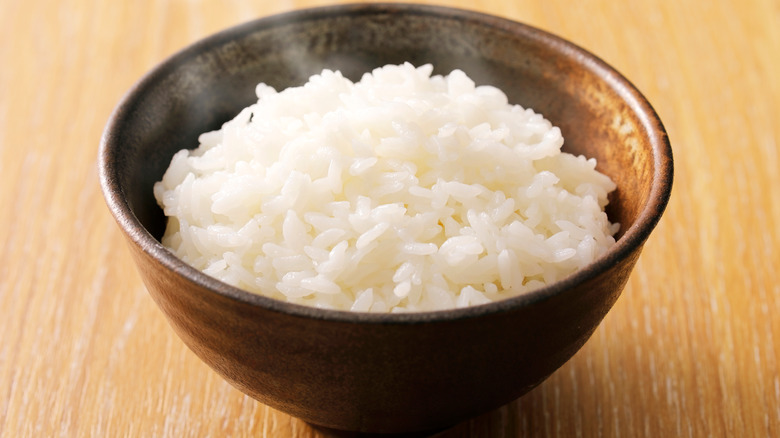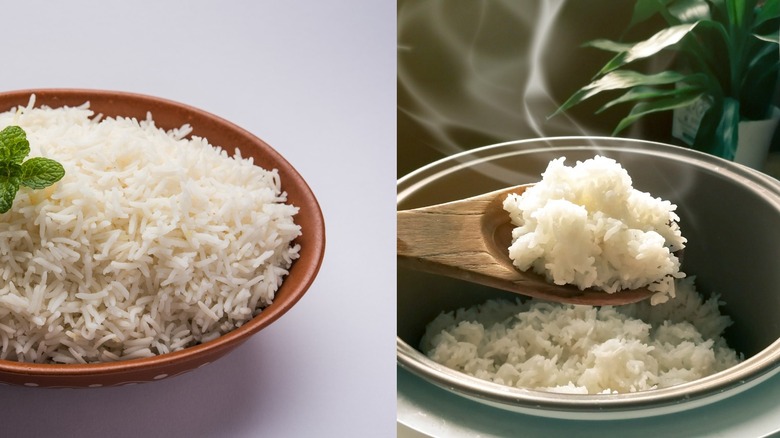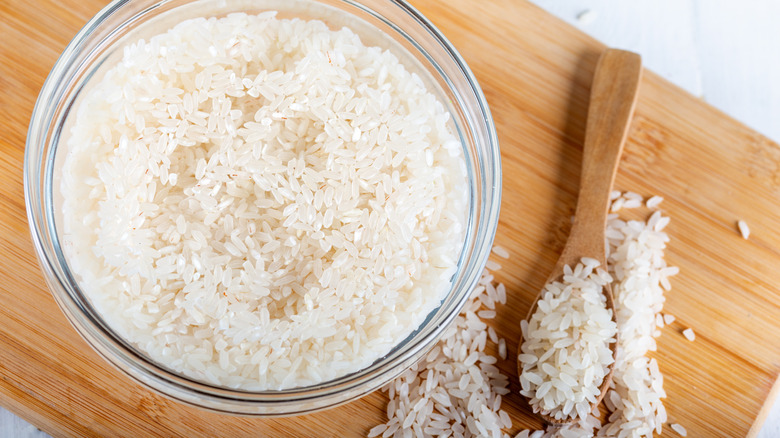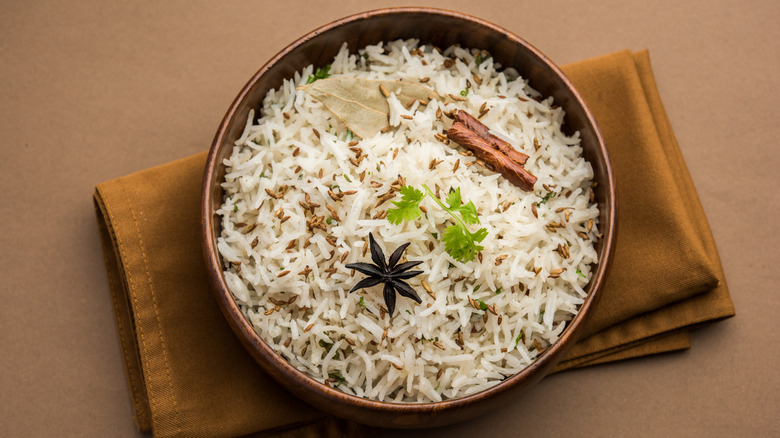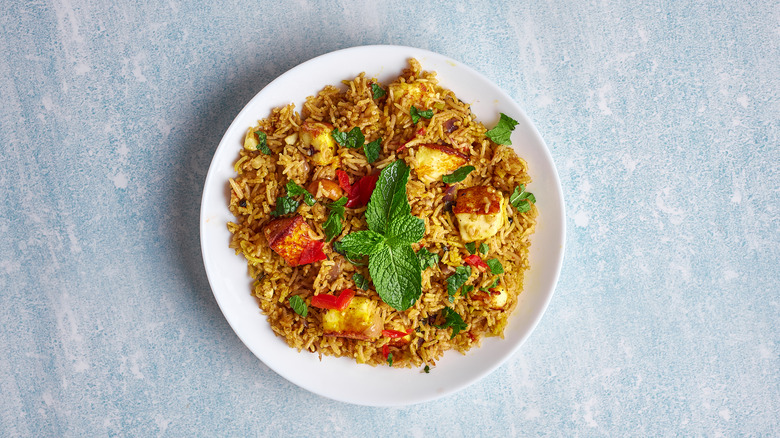The Real Difference Between Basmati Rice And Jasmine Rice
If you've ever spent time staring at bags of basmati and jasmine rice in the grocery store, then you might have had difficulty coming to a conclusion about which one to buy. Often treated as interchangeable, both can serve as a good substitute for plain long-grain white rice in dishes. In short, if you find yourself wondering what the real difference is, you are probably not alone.
Basmati and jasmine rice are both considered aromatic rices, found in countless dishes ranging from Middle Eastern to Indian to Asian cuisines. Jasmine rice originally comes from Thailand and is more typical of Southeast Asian cuisine, while basmati rice originated in India and is more frequently eaten in the Middle East. Cooked jasmine rice has a sweet, floral fragrance similar to, well, jasmine; basmati (who's name translates to "full of fragrance") is similarly pleasant to smell. While there are clear geographical and olfactory differences between the two — at least, if you know what you're smelling for — there are other, less obvious differences as well. You just have to look very closely at both varieties of rice to notice.
The difference is most apparent after cooking the rice
The first difference you might notice between cooked jasmine and basmati rice is more of a tactile one: jasmine rice tends to be softer than basmati, and its grains tend to stick together a lot more. So, if you experience very starchy and sticky rice when you dig your fork into the bowl, chances are it is jasmine; if you have a fluffy bowl full of more independent grains, it's likely basmati.
There's also a physical difference you can likely spot just by looking at the rice if you're familiar with or have both in front of you. While jasmine and basmati rices are both considered long grain varieties, basmati grains tend to be longer and thinner than jasmine grains. This is the most helpful indicator to be aware of when you're buying in bulk, as you don't have to cook or even touch the grains to tell them apart.
Cooking differences between jasmine and basmati rice
While you might think that you can cook all kinds of rice the same way — by boiling it in water on the stovetop or in a rice cooker — that's not necessarily the case. Some kinds of rice can be cooked in different ways or require additional steps before cooking, as is the case for both jasmine and basmati rice.
Cooking basmati rice correctly results in dry, fluffy grains. To achieve this, the ingredient needs to be soaked in water for at least 30 minutes before cooking, which helps the grains cook evenly. Jasmine rice, on the other hand, doesn't need to be soaked at all. The ingredient can simply be rinsed before being steamed or cooked with a specific ratio of water.
Depending on how much time you have, you can experiment with cooking both kinds of rice to find which works best for you and your needs.
Nutritional differences between the two rices
As you might suspect, there is little difference between the amount of calories both basmati and jasmine rice provide. According to Taste Essence, jasmine rice has 205 calories per cup, while basmati rice packs 238 calories. While you might be tempted to go for jasmine based on the few calories that could be saved, there's another nutritional standard you might want to consider.
While the two types of rice do have a lot in common nutritionally, jasmine rice has a significantly higher glycemic index rating. Jasmine rice ranks 109 on the glycemic index, while basmati rice is just 58 — meaning basmati rice will keep you full for longer because it is digested more slowly. With a GI rating nearly half that of jasmine, those looking to eat less should choose basmati rice if they are basing their decision on that alone.
Dishes and cuisines using basmati and jasmine rice
Since basmati rice is native to India, it is often found in Indian cuisine. Dishes like curries, pilafs, and biryani as all ones that call for basmati rice; but why stop at Indian food? There are a ton of other cuisines and dishes basmati goes well with. The Food Network suggests using basmati in recipes like chicken and rice, saffron rice with tahdig, and Ina Garten's basmati rice with tons of chopped scallions and parsley.
Jasmine rice (which you'll remember hails from Thailand) is often used in Southeast Asian recipes, frequently found beside or under mains, or even in desserts like rice pudding. Taste of Home suggests jasmine rice for recipes like cilantro-lime rice, cherry and spice rice pudding, Thai red chicken curry, and grilled shrimp scampi.
No matter which rice you choose, we're sure it will to be a fragrant and mouth-watering meal.
